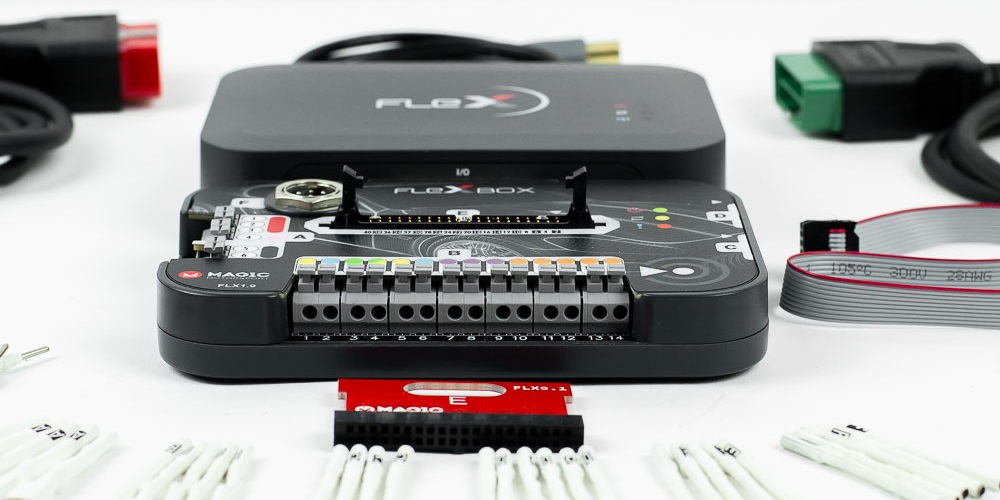
If you’re looking to bring out the best performance in your car, ECU tuning might be the solution you’re after.
ECU tuning can unlock hidden horsepower, optimize fuel efficiency, and make your driving experience more enjoyable. At Shop4Tuner, we know that tuning can be both an art and a science, requiring specialized knowledge and tools.
In this comprehensive guide, we’ll walk you through the essentials of ECU tuning, explaining what it is, how it’s done, and why using a professional tuning platform like ours can yield the best results.
What is ECU Tuning?
ECU (Engine Control Unit) tuning refers to the process of modifying a vehicle’s electronic control module to improve performance. Modern vehicles are equipped with ECUs, which act as the “brain” of the engine. The ECU monitors and controls various engine parameters such as fuel injection, air-fuel ratio, ignition timing, and turbocharging pressure. By adjusting these parameters, you can fine-tune your engine’s performance to match specific goals, like increasing horsepower or improving fuel economy.
Car manufacturers program the ECU conservatively to meet regulatory standards, accommodate a variety of climates, and extend engine longevity. But for performance enthusiasts, tuning the ECU allows for optimized power, torque, and response. This is where professional tuning comes in, enabling you to achieve the best results for your vehicle.
How to Access the ECU: Methods for Connecting to the ECU
The first step in tuning any car is accessing the ECU to read and write data. There are a few popular methods for connecting to the ECU:
1. OBD2 Port
The OBD2 (On-Board Diagnostics) port is the most straightforward way to access the ECU. It’s a standardized port that gives you access to the vehicle’s diagnostics and some ECU functions. OBD2 connections are often used in basic tuning applications since they offer convenient plug-and-play access.
- Advantages: OBD2 is easy to use and doesn’t require disassembling the vehicle. It’s ideal for mild to moderate tuning.
- Limitations: While convenient, OBD2 does not provide full access to some ECUs, which may limit your tuning capabilities.
2. Bench Tuning
For more advanced tuning, especially with modern vehicles, bench tuning is often necessary. This method involves physically connecting to the ECU on a workbench, which provides full access to its data and mapping tables.
- Advantages: Bench tuning provides full access to the ECU, allowing you to modify more in-depth parameters.
- Limitations: This approach requires removing the ECU from the vehicle and is typically best performed by experienced tuners.
3. Boot Mode Tuning
Boot mode tuning is a specialized method that involves unlocking ECUs that are otherwise restricted. It requires disassembling the ECU and connecting to specific pins on the circuit board to read and write data.
- Advantages: Provides access to locked ECUs that cannot be tuned through OBD2 or bench tuning alone.
- Limitations: This is a complex process and can be risky if performed incorrectly.
Reading the Original Car Map

Once you’ve accessed the ECU, the next step is to read the original map. This map contains all of the engine’s operating data, which you can adjust to achieve desired performance changes. To read and modify this map, you’ll need specialized software and a stable connection to the ECU.
Key Parameters to Examine in the Original Map
When tuning a car’s ECU, there are several parameters that are essential for performance:
- Fuel Injection Timing and Quantity: Adjusting fuel delivery helps to increase power and optimize fuel efficiency.
- Air-Fuel Ratio (AFR): Tuning the AFR ensures the engine has the right mixture of air and fuel for combustion, which is critical for power and efficiency.
- Ignition Timing: Modifying ignition timing can enhance throttle response, improve horsepower, and reduce the chance of knocking.
- Turbo Boost Pressure: If the car is turbocharged, adjusting boost pressure can significantly increase power. However, it requires careful balancing to avoid overstressing the engine.
- Torque Management: Modern cars have torque limits set within the ECU for safety and reliability. Adjusting these limits can unlock extra performance but should be done cautiously.
Making the Adjustments
Once you’ve analyzed the original map and identified areas for optimization, it’s time to make adjustments. Here are a few best practices:
- Make Small Increments: Small adjustments help maintain stability and prevent potentially harmful changes.
- Use a Dyno for Testing: To verify the effects of your adjustments, use a dynamometer (dyno) to measure the changes in real-time.
- Monitor Engine Health: After tuning, it’s crucial to monitor the engine’s health, ensuring that temperatures, pressures, and other critical metrics are within safe ranges.
The Benefits of Using Shop4Tuner
Tuning an ECU requires a high level of technical knowledge, attention to detail, and specialized equipment. For those who want professional results but may not have the experience or resources, Shop 4 Tuners offers a solution. Here’s why you should consider our platform for your tuning needs:
1. Expert Engineers at Your Service
At Shop4Tuner, we work with a team of skilled engineers who specialize in ECU tuning. These experts have years of experience in performance tuning, ensuring that each tune is carefully calibrated for optimal performance and safety. Whether you’re looking for a mild enhancement or a high-performance tune, we have engineers to meet your specific needs.
2. High-Quality Chiptuning Files
Our platform provides access to high-quality chiptuning files tailored for a wide variety of vehicles. These files have been thoroughly tested to ensure reliability and performance. With Shop4Tuner, you can trust that the files you purchase are optimized for your vehicle, with parameters set to extract the best results while protecting engine longevity.
3. Time and Cost Efficiency
Tuning a car can be time-consuming, especially if you’re doing it manually and lack the necessary experience. With our team, you can save valuable time by purchasing ready-made chiptuning files or commissioning a custom tune from our experts. This allows you to focus on your customers and grow your business without having to invest in additional equipment or software.
4. Consistent, High-Performance Results
Our platform prioritizes quality and consistency. Unlike DIY solutions or generic tunes, each file from our platform is custom-tailored for optimal results. This means smoother power delivery, better throttle response, and an enhanced driving experience for your customers, all while maintaining reliability.
5. Support and Resources for Your Business
Beyond tuning files, we offer a range of resources to support you as a car tuner. From technical support to educational content, We are committed to helping you achieve success in the chiptuning industry. Our community of tuners and engineers is available to answer questions, share insights, and help you grow your business.
Conclusion

ECU tuning is a powerful way to unlock your car’s hidden potential, but it requires specialized knowledge and precision. By adjusting key parameters like fuel injection timing, air-fuel ratio, ignition timing, and turbo boost pressure, you can achieve significant improvements in performance and efficiency. However, tuning also comes with its own set of challenges, from accessing the ECU to safely modifying the original map.
That’s where Shop4Tuner comes in. Our platform is designed to make the tuning process easier, safer, and more effective by providing access to high-quality chiptuning files and expert engineers. Whether you’re a seasoned tuner or just starting out, Shop4Tuner offers the tools, resources, and support you need to deliver the best results for your customers.


